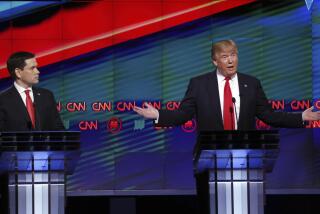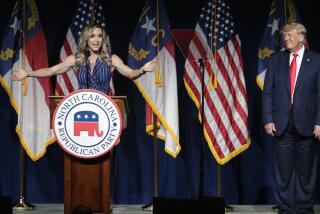Political books take on U.S. economy and ‘tea party’ rise

One of the late Sen. Daniel Patrick Moynihan’s (D-N.Y.) enduring insights was that genuine politics are a continuing argument about the future. “The central conservative truth,” he wrote, “is that it is culture, not politics, that determines the success of society. The central liberal truth is that politics can change a culture and save it from itself.”
Coming, as he did, from a generation whose realists on both sides of the congressional aisle esteemed moderation as politics’ royal road, Moynihan well might wonder whose truth could save our current politics from the broad, bitter, popular anger pouring like a lava flow across the electoral landscape. There really isn’t any issue of culture and politics worth discussing at the moment except this rage, its origins, content, implications and duration. Each of the four books under review here attempts to do that with some success and, in crucial aspects, with surprising unanimity.
Jacob S. Hacker and Paul Pierson, the authors of “Winner-Take-All Politics: How Washington Made the Rich Richer — and Turned Its Back on the Middle Class,” are highly regarded political scientists at Yale and UC Berkeley, respectively. Scott Rasmussen and Douglas Schoen — “Mad as Hell: How the Tea Party Movement Is Fundamentally Remaking Our Two-Party System” — are successful pollsters. Though there are differences in emphasis in their analyses (and, certainly, in their prescriptive passages) the four, like the other two authors in this review, are agreed on the origins of the broad populist insurgency we’ve come to call the “tea party.”
Since the 1970s, they point out, a series of booms, dazzling, technology-based gains in productivity and the exponential growth of two-income households have camouflaged bitter economic reality: The American economy, once a great engine of broadly distributed prosperity, has become a machine that enriches a tiny few and gives the vast majority of blue- and white-collar working families little more than growing insecurity.
Both “Winner-Take-All Politics” and “Mad as Hell” cite the crucial work of UC Berkeley economist Emmanuel Saez, who has shown that by 2007, the top 10% of American earners were taking home a staggering 49.7% of the nation’s annual wages, a concentration “higher than any year since 1917,” and one that “even surpasses 1928, the peak of the stock market bubble in the ‘roaring 20’s.’”
That actually understates the situation because, “according to Saez’ calculations … in 2007 the top .01% of American earners took home 6% of total U.S. wages, a figure that has nearly doubled since 2000.” According to the Census Bureau, while blue-collar wages have been absolutely stagnant since the Carter administration and actually have fallen 2.5% during this decade, the median income of the top 1% of U.S. households has increased a stunning $250,000.
The Great Recession, with its catastrophic loss of jobs occupied by college-educated white-collar workers, has spread the corrosive insecurity and hopelessness that has afflicted so many traditional industrial workers across the social landscape.
Rasmussen and Schoen map the contours of this new American geography of desperation. What they convincingly show is that economic stagnation and the collapse of equality and opportunity have produced an equally catastrophic decline in confidence in every sort of public institution — including political parties, big business, big labor, the media and mainline organized religion. People no longer believe in what’s come to be called “the American dream.” Instead, people know things are bad, and they believe things will get worse.
“Winner-Take-All Politics” argues that all this has come to pass not simply because of faceless economic forces, but through an unending series of federal regulatory and legislative decisions that favor the wealthy and the interests of the institutions they control. These are decisions dating back to the 1970s and have remained consistent whether Democrats or Republicans controlled the White House and Congress. The derivative financial instruments that played such a key role in triggering the Great Recession, for instance, were unregulated because of decisions made during the Clinton administration. Hacker and Pierson cite the particularly relevant work of Princeton scholars Larry Bartel and Martin Gilens, who have shown that, since the 1980s, U.S. senators’ votes have usually coincided with the views of the wealthiest third of their constituents and rarely with the opinions of the poorest third of their state’s residents.
The historically unique populist movement that calls itself the tea party is the loosely organized expression of the consequent enraged hopelessness, abetted by technological shifts in the media, notably the Internet, 24-hour cable news and talk radio. The tea party is unique because it is neither a left-wing nor a right-wing populist tendency, but one that simply wants as much of government as possible to just go away. Hence the movement’s theological faith in the Constitution they imagine the framers drafted.
In “Boiling Mad,” Kate Zernike, a national correspondent for the New York Times, examines the tea party’s origins and operations while putting a human face on its adherents. Her concise, elegantly written book is a refreshing reminder of what traditional journalism — so often despised and discounted these days — can contribute to the public conversation. Zernike points out that the tea party is lodged in the Republican Party mainly as a matter of convenience and disdains the GOP establishment as surely as it does the Democrats. As one activist told her: “To get rid of the Democrats, you have to get rid of the Republicans.” She also gives a convincing portrait of the movement’s most ardent activists, who mainly are libertarian conservatives in their 20s and 30s and suburban mothers, who want to raise their children in security and free of any outside interference.
Their prominence, Zernike reports, seems likely to engender tensions with the movement’s older foot soldiers — voters in their 60s and older who rely on Social Security, Medicare and veterans’ benefits that the younger tea partiers regard as part of the “big government” problem. So, too, the social issues that many tea party adherents want to put on the table, but which the “purists” regard as a distraction from the crucial economic and governmental issues.
Zernike is particularly good at presenting the way in which the movement has taken inspiration from the works of various, obscure constitutional eccentrics, particularly “The 5000 Year Leap” by W. Cleon Skousen, who believed that the framers did not intend separation of church and state and that “under no circumstances is the federal government to become involved in the public welfare. The founders felt it would corrupt the government and also the poor.”
Will Bunch, a Pulitzer Prize-winning journalist who now blogs for the Philadelphia Daily News, sets out in “The Backlash” to chart the darker fringes of the populist extreme that have acquired a new energy since the election of Barack Obama. This is the dark undercarriage of the popular juggernaut the other three books describe, and Bunch gives a sobering account of the ugly old passions that have found new life and of the opportunists, such as Fox personality Glenn Beck, who believe they can profit from desperation. Unlike the other authors, who see something new in the tea party, Bunch argues that this is old wine in new skins — and a bitter vintage in either case.
More to Read
The biggest entertainment stories
Get our big stories about Hollywood, film, television, music, arts, culture and more right in your inbox as soon as they publish.
You may occasionally receive promotional content from the Los Angeles Times.






